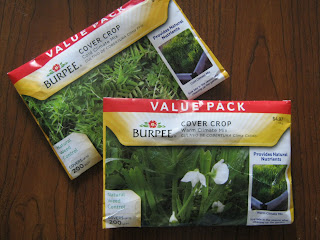In a recent survey, the state’s Master Gardeners indicated that they’d like to know more about sustainable gardening. One big hurdle will be figuring out exactly what “sustainable gardening” means!
Some gardeners are going to want to see a focus on ecological sustainability – such that the garden’s soil develops a healthy mix of microbial and other life, and as many pests as possible are “handled” by resident populations of beneficial organisms. Such a garden might rely a lot on things like cover crops, local composts, and crop rotation and use very little in the way of purchased inputs, while staying as far away from any non-renewable resources as possible.
However, there will also be a group that prefers to emphasize that a sustainable garden is one that the gardener can most easily create and maintain. The selected inputs are reasonably priced, the planning and physical workload are easily manageable, but the garden still produces plenty of the desired foods. Non-renewable inputs are used prudently, but they definitely have a place in this version.
And then there's probably a group that will not consider a garden to be sustainable if it can't be maintained productively through a serious hard time (think "zombie apocolypse"). This group might (I don't know for sure) use a mix of several strategies, ranging from keeping a stash of stored inorganic nutrients and other inputs for just-in-case, to the setting up of composting toilets as a source of nutrients and organic matter.
All will agree, I think, that a sustainable garden should be sized so that the gardener isn’t overwhelmed by the work of maintaining it. After all, if the garden is over-run with weeds, or if it becomes like a deep dark pit into which money and time disappear, the gardener may opt to “throw in the trowel” and return the space to something like turf. The overly-consumptive garden isn’t at all sustainable.
A garden also can't continue if its soils become depleted of nutrients.The most easily obtained (for urban and suburban gardeners, anyway) and inexpensive inputs tend to be inorganic fertilizers, like a bag of 10-10-10. Over time, though, if not enough is done to improve - or even just maintain - soil health, yields will drop. Our experience at the Plant-A-Row-For-the-Hungry garden shows that fairly well.
In the first several years we mulched with newspaper and fallen leaves (saved over the winter for use in spring and summer), and we followed fertilizer recommendations that came with our soil test results. Over those several years, yields dropped a little very year. Then, we switched to organic sources of nutrients and grew a winter cover crop of Austrian Winter peas. After just one winter, yields went back up to almost as high as those in the very first year of the garden. Talk about a turnaround!
The original plan/method turned out to be not sustainable in terms of the garden's continuing productivity - but the 50 pound bag of kelp meal wasn't cheap, and we had to travel a ways to find the giant bag of cover-crop peas for our 4,000 sq. ft. garden. If we had had a tighter budget, the garden might have suffered for another year.
It's a pretty safe bet that there will be huge areas of disagreement in what a sustainable garden would look like - or whether it's even possible to create one - and in the end, creating a garden that is acceptably sustainable is probably going to require a bit of a balancing act. It probably also will look different for different gardeners.
In the near term, my mostly-organic, home vegetable garden is an OK size. I can manage its ~350 sq. ft. of various beds mostly on my own, and it provides a decent amount of food for my family.
Some years, I am less good about managing it in a way that requires fewer inputs, because the environmentally sustainable way, the way that builds soil organic matter and encourages a diverse and abundant liveliness within the soil, usually requires some planning. It requires cover crops, as much compost as my yard can deliver, and good crop rotations; it requires planning for pollinators and habitat for beneficial insects; it requires enough forethought to get the nutrients into the soil soon enough that the microbial life can make it available to transplants, and more.
Even in my best, most "on" years, when all the planning happens and when I actually manage to follow through, I'm not sure the whole enterprise is completely sustainable - but the food is good, being out-of-doors is great, and for me, anyway, it's close enough.
 The baby plants are super-tiny, with stems thinner than sewing thread and cotyledons sized to match. For the rest of the winter, these will grow fairly slowly, and I will be keeping them under flourescent lights, repotting as necessary, until the weather moderates enough that they can go outside. Then, as many as there are will go into a "nursery bed" outside until they are big enough to pot up for sharing. One of the great things about gardening is that I get to see everyday miracles like the one of such tiny plants growing to become full-sized bushes!
The baby plants are super-tiny, with stems thinner than sewing thread and cotyledons sized to match. For the rest of the winter, these will grow fairly slowly, and I will be keeping them under flourescent lights, repotting as necessary, until the weather moderates enough that they can go outside. Then, as many as there are will go into a "nursery bed" outside until they are big enough to pot up for sharing. One of the great things about gardening is that I get to see everyday miracles like the one of such tiny plants growing to become full-sized bushes!




































